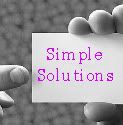Definition:
“This office tool is used for accounting calculation and also different daily usage software”.
Examples:
Bill, inventory, salary sheet, etc.
Interface of MS Excel:
3). Standard tool bar
4). Formatting bar
5). Formula bar
In this bar when user applies a formula, formula automatically appears in this bar, user can edit formula with the help of this bar.
Parts of formula bar:
Formula pane
Cell address box
No of columns in cover sheet (256)
No of rows in one sheet (25536)
Working area of MS Excel is known as work sheet.
Note:
By default 3 work sheets are visible when Excel is open.
To open MS Excel:
- L.C on start menu
- L.C on all programs
- L.C on MS OFFICE
- L.C on MS EXCEL
Windows + R press keys
Type excel
Press enter
Note:
File menu, edit menu, view menu, and insert menu, are similar to MS Word.
(2) Sum (range of cells)
In cell numeric data have right alignment
Text has alignment
Percentage:
Total obtained marks *100 /total marks
Average:
Average (range of subjects)
If condition:
=if (cell address > = 33, “pass”, “fail”)
If user wants to display data in alphabetic data then user must type data in double commas “
- = 90 ……………….A++
- = 80…………………A+
- = 70…………………A
- = 60…………………B
- = 50…………………C
- = 40……………….D
- = 33………………..E
- F…………..false value
To repeat if condition, in nested if condition repeat on seven times.
=if (per > = 90, “A++”, if (per > = 80, “A+”, if (per > = 70, “A”, if (per > = 60,”B”, if (per > = 50, “C”, if (per > = 40, “D”, if (per > = 33, “E”, “F”)
Remarks scale:
Condition
= A++…………………….outstanding
= A+………………………excellent
=A………………………..V. Good
= B………………………. Good
= C…………………………fair
= D………………………….Normal
= E………………………… Poor
Fail………………………..false value
= if (grade > = “A++”, “outstanding”, if (grade > = “A+”, ”Excellent”, if (grade > = “A”, “V good”, if ( grade > = “B”, “good”, if (grade > = “C”, “fair”, if (grade > = “D”, “normal”, if (grade > = “E”, “poor”, “fail”.)))))))
= if (and (per% cell address > = 33, cell address < =100),”pass”, “fail”)
>70, < =80………………………..A
>60, < =70……………………….B
>50, < =60………………………C
>40, < =50………………………D
>33, < =40………………………E
False value……………………F
=if (and (per >90, per < =1 00), “A++”, if (and (per > 80, per < = 90), “A+”, if (and (per > 70, per < = 80), “A”, if (and (per > 60, per < = 70), “B”, if (and (per > 50, per < = 60), “C”, if (and (per > 40, per < = 50), “D”, if (and (per > 33, per < = 40), “E”, “F”,)))))))
If condition is logical. If and condition is technical.
To count numeric cells
= count (cell range)
Count A:
To count those cells having alphabetic and also numeric value.
= counta (cell range)
Count Blank:
To count blanks cells in database
= count blank (cell range)
Count if:
To count something with single criteria
= count if (cell range, criteria)
Sum if:
To take sum of numeric value with the help of criteria
=sumif (cell range, criteria, sum range)
Is blank:
To check cell if blank or not.
If cell is blank then answer is true otherwise false.
= is blank (cell)
Is test:
To check value in cell is alphabetic.
If cell contain alphabetic blank then answer will be true otherwise false.
= istext (cell)
Is number:
To check value of cell is numeric. If cell contain numeric value then answer will be true otherwise false.
= is number (cell)
Dcount:
To count something with different criteria
= dcount (database, field, criteria)
S sum:
To take sum of something or any person numeric value with different criteria.
=d sum (database, field, criteria)
D mine:
To check minimum value with the help of criteria.
= d min (database, field, criteria)
Tools protection:
3. File protection
1. Pointer required sheet wants to protect
3. Protection
4. Sheet protection “L.C”
5. Type required password
6. Retype required password
7. Ok / save / tray to change
UN Protection:
3. Protection
4. Un protect sheet “L.C”
5. Type required password
6. Ok / save / change required data
Perform selective UN Protection:
3. L.C on lock tab
4. Locked “un check”
5. Ok
6. Repeat sheet protection steps
Selective protection:
3. Protection tab “ L.C”
4. Locked “un check”
5. Ok
6. Select required range wants to protect
7. Ctrl + 1 “open format cell”
8. Protection tab “L.C”
9. Locked “check”
10. Repeat sheet protection steps
Book protection:
1. Pointer required book wants to protect
2. Tools menu
3. Protection
4. Book protection “L.C”
5. Type required password
6. Retype required password
7. Ok
File protection:
1. Pointer required file wants to protect
2. Tools menu
3. Option
4. Security tab “L.C”
5. Password to open “type required password”
6. Retype password
7. Ok
Macro:
“Save set of command / actions” Sheet to sheet move
1. Pointer required 1st sheet
4. Record new macro
5. Type required macro and key
6. Ok
7. Move required 2nd sheet
8. Stop macro “L.C”
Macro security level:
1. High level
2. Medium level
3. Low level
Change macro security level:
1. Pointer required book wants to change macro security level
2. Tools menu
3. Macro
4. Macro security “L.C”
5. Select required security level
6. Ok / save / close / open required book
Auto filter:
2. L.C on data menu in menu bar
3. L.C on filter
4. L.C on auto filter
5. Select required criteria from drop down box
Advance filtration:
To check record from data base without formula.
1. L.C on data menu in menu bar
2. L.C on filter
3. L.C on advance filter
4. Select data range
5. Select criteria range
6. Select copy to another location cells
7. L.C on ok
1. L.C on insert menu
2. L.C on chart
3. Select chart design
4. Select data range and also select alignment of chart as row wise and column wise
5. L.C on next6. Apply chart formatting
7. L.C on next
8. Select chart as object or as new sheet
9. L.C on finish















































